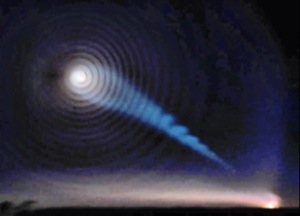Difference between revisions of "Trajectory"
From Nordan Symposia
Jump to navigationJump to search (Created page with 'File:lighterstill.jpgright|frame ==Origin== New Latin ''trajectoria'', from feminine of ''trajectorius'' of passing, from Latin ...') |
|||
| Line 1: | Line 1: | ||
| − | [[File:lighterstill.jpg]][[File: | + | [[File:lighterstill.jpg]][[File:NorwayTorsion-300.jpg|right|frame]] |
==Origin== | ==Origin== | ||
Revision as of 20:25, 13 December 2012
Origin
New Latin trajectoria, from feminine of trajectorius of passing, from Latin traicere to cause to cross, cross, from trans-, tra- trans- + jacere to throw
Definitions
- 1: the curve that a body (as a planet or comet in its orbit or a rocket) describes in space
- 2: a path, progression, or line of development resembling a physical trajectory <an upward career trajectory>
Description
A trajectory is the path that a moving object follows through space as a function of time. The object might be a projectile or a satellite, for example. It thus includes the meaning of orbit—the path of a planet, an asteroid or a comet as it travels around a central mass. A trajectory can be described mathematically either by the geometry of the path, or as the position of the object over time.
In control theory a trajectory is a time-ordered set of states of a dynamical system (see e.g. Poincaré map). [1]
